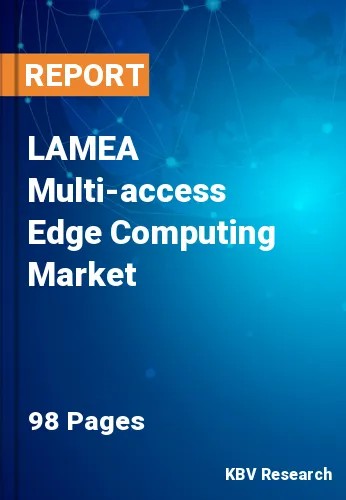The Latin America, Middle East and Africa Multi-access Edge Computing Market would witness market growth of 45.3% CAGR during the forecast period (2021-2027).
The integration of edge computing and Big Data analytics is offering lucrative opportunities for the growth of the market. The increasing deployment of multi-access edge computing by service providers is fueling the growth of the market due to the rising demand from financial services, energy sectors to develop financial instruments, competitive intelligence, business decision tools, manufacturing, and agriculture. In addition, to decrease the high volume of data, Big Data analytics is massively used for better management that helps in creating a compression-based data reduction and allows easy transfer of in-network data in data centers.
The advent of hybrid computing architecture platforms is estimated to allow organizations to get a quick data analysis, which will help in smoothening practices of large-volume data analysis. This trend would witness a significant surge during the forecasting period, which will contribute to the growth of the multi-access edge computing market.
In LAMEA, the rapid advancements in IoT are helping the technology to evolve as a mature technology. In spite of that, factors like concurrent growth in the number of IoT devices, proliferation in the varied types of IoT applications, and demand to use versatile connectivity options, have created several issues like mobility, scalability, latency, privacy, availability, security, and power consumption. In general, IoT leverages cloud computing facility which is facing several challenges like reachability, high wide area network (WAN) latency, single-point-of-failure, and lack of location awareness.
In this situation, MEC is prepared to play an important role by providing many mutual advantages. MEC allows computational resources to be located very close to IoT devices, which further provides several benefits like computation offloading. MEC offers several benefits for IoT in the 5G period like provides traffic filtering, enhanced scalability & lifespan of IoT devices, and facilitates accelerated decision making based on the locally processed data, which reduces end-to-end delay. These benefits are accountable to upsurge the adoption rate of MEC, which will lead to an increase in the growth of the regional multi-access edge computing market in the upcoming years.
The Software market dominated the South Africa Multi-access Edge Computing Market by Solution 2020, thereby, achieving a market value of $89 million by 2027. The Hardware market is exhibiting a CAGR of 48.4% during (2021 - 2027). Additionally, The Services market would showcase highest CAGR of 48.9% during (2021 - 2027).
Based on Solution, the market is segmented into Software, Hardware and Services. Based on End User, the market is segmented into Telecom & IT, Data Centers, Automotive, Smart Cities, Smart Homes, & Smart Buildings, Energy & Utilities, and Others. Based on countries, the market is segmented into Brazil, Argentina, UAE, Saudi Arabia, South Africa, Nigeria, and Rest of LAMEA.
Free Valuable Insights: The Global Multi-access Edge Computing Market is Predict to reach $16.7 Billion by 2027, at a CAGR of 39.1%
The market research report covers the analysis of key stake holders of the market. Key companies profiled in the report include Hewlett Packard Enterprise Company, Juniper Networks, Inc., Huawei Technologies Co., Ltd., Amazon.com, Inc., Microsoft Corporation, Adlink Technology, Inc., Advantech Co., Ltd., ZephyrTel, FogHorn Systems and SMART Embedded Computing.
By Solution
By End User
By Country
Our team of dedicated experts can provide you with attractive expansion opportunities for your business.

